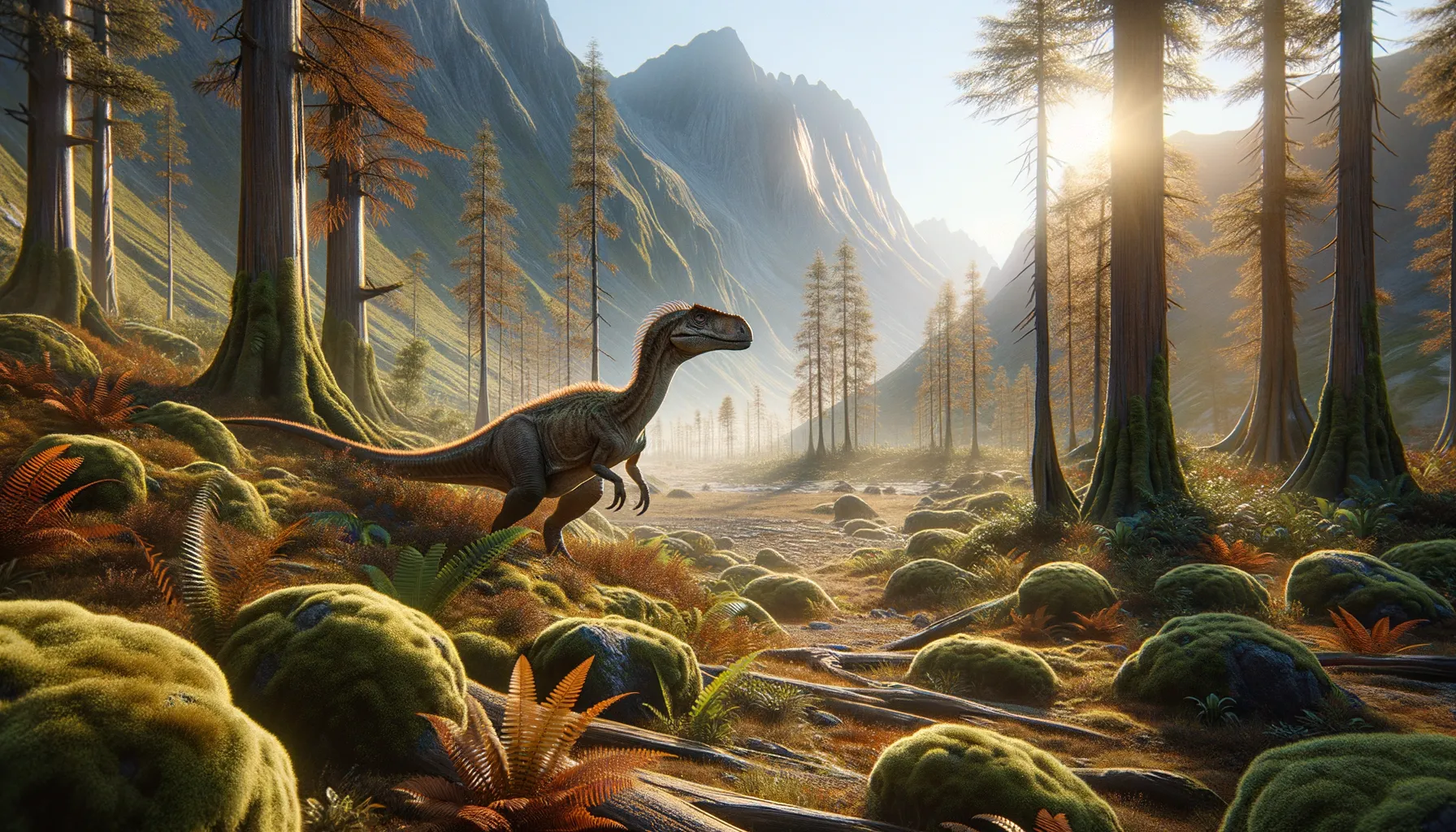
Microhadrosaurus
Tiny dino with a big prehistoric story!
Period
Cretaceous
Length
About 2 meters long.
Height
Exact height is undetermined.
Weight
Estimated to be small and lightweight.
Microhadrosaurus was a small herbivorous dinosaur that roamed the earth in the Late Cretaceous period. Known primarily through fragmentary fossils, this dinosaur is often imagined as resembling much larger hadrosaurid relatives but in a smaller form. Its discovery in China has provided insights into the diversity of duck-billed dinosaurs, despite the limited remains available.
Diet
Microhadrosaurus was herbivorous, mainly feeding on plants. Its small size suggests it may have foraged on low-growing vegetation within its habitat.
Hunting
As a herbivore, Microhadrosaurus did not hunt other animals. It likely focused on gathering plant materials for sustenance, moving slowly to graze.
Environmental challenges
Living in the Cretaceous period, Microhadrosaurus faced challenges such as varying climates and potential competition for food with other herbivores. Predation by larger carnivorous dinosaurs could have also posed a threat. Adapting to its environment, it may have developed strategies to evade predators and efficiently forage for food.
Speed
Likely a slow mover.
Lifespan
Unknown due to limited fossil evidence.
First discovery
Discovered in China in 1979.
Fun Facts
- Microhadrosaurus is known from only a few fossil fragments, making it a bit of a mystery dinosaur.
- The name 'Microhadrosaurus' means 'small sturdy lizard', hinting at its presumed size and build.
- It lived during the Late Cretaceous period, around 70 million years ago, when dinosaurs were still thriving.
- Despite its name, Microhadrosaurus might not have been particularly small compared to other dinosaurs, just smaller than its relatives.
- Microhadrosaurus is believed to be a herbivore, likely feasting on the lush plant life of its time.
- The fossils of Microhadrosaurus were first discovered in China, contributing to the understanding of dinosaur diversity in Asia.
- Because so little is known, Microhadrosaurus often prompts curious questions and encourages further research.
Growth and Development
Microhadrosaurus likely experienced growth spurts during its juvenile stages, needing to adapt to its environment quickly. As with other dinosaurs, reaching a certain size may have helped in reducing predation risks. Its development cycles would have been crucial for survival in the dynamic Late Cretaceous ecosystem.
Habitat
Microhadrosaurus inhabited areas that are now part of modern-day China. This habitat likely included forests and floodplains, providing plenty of resources for a herbivorous diet. Such regions would’ve been rich in diverse plant life, ideal for its feeding requirements.
Interaction with other species
Microhadrosaurus may have interacted with other herbivorous dinosaurs while foraging. Its presence in a mixed environment suggests possible encounters with various predators. These interactions would influence its daily activities and survival strategies.
Natural lifespan
Its natural lifespan remains speculative due to limited fossil evidence.
Reproduction
Reproduction was probably through egg-laying, similar to other dinosaur species. The nesting habits are unknown, but communal nesting sites or solitary nests might have been utilized. Parental care levels remain speculative without additional fossil records.
Social behaviour
Social behaviour evidence is limited, but small herd groupings could be speculated for protection and efficient feeding. Interaction with juveniles within groups could have been part of their social structure. Knowledge of its specific social dynamics are limited without further fossil discoveries.
Fossil locations
Fossils were primarily found in China. The limited discoveries suggest that more evidence is needed to fully understand its distribution. The findings in Asia contribute to the understanding of regional dinosaur diversity during the Cretaceous.
